1140 Royal Street, New Orleans, Louisiana, 70116
Is this house where slaves were tortured at the hands of Delphine LaLaurie?
If you've read anything about the ghosts and hauntings in New Orleans, there's no doubt that you've heard about the LaLaurie Mansion. It is one of the most popular stops on our New Orleans Ghost Tours. Sometimes, people in the city won't even call it that, choosing to refer to 1140 Royal Street as "the Haunted House" instead. The fact is, in New Orleans, the two are the same. Shows like American Horror Story have made an already infamous location that much more notorious. (Spoiler: be warned that producers took great creative liberties, as Hollywood tends to do.) The majority of filming happened at the Hermann-Grima House on St. Louis Street--probably for the best, honestly, as people claim that the LaLaurie Mansion is cursed.
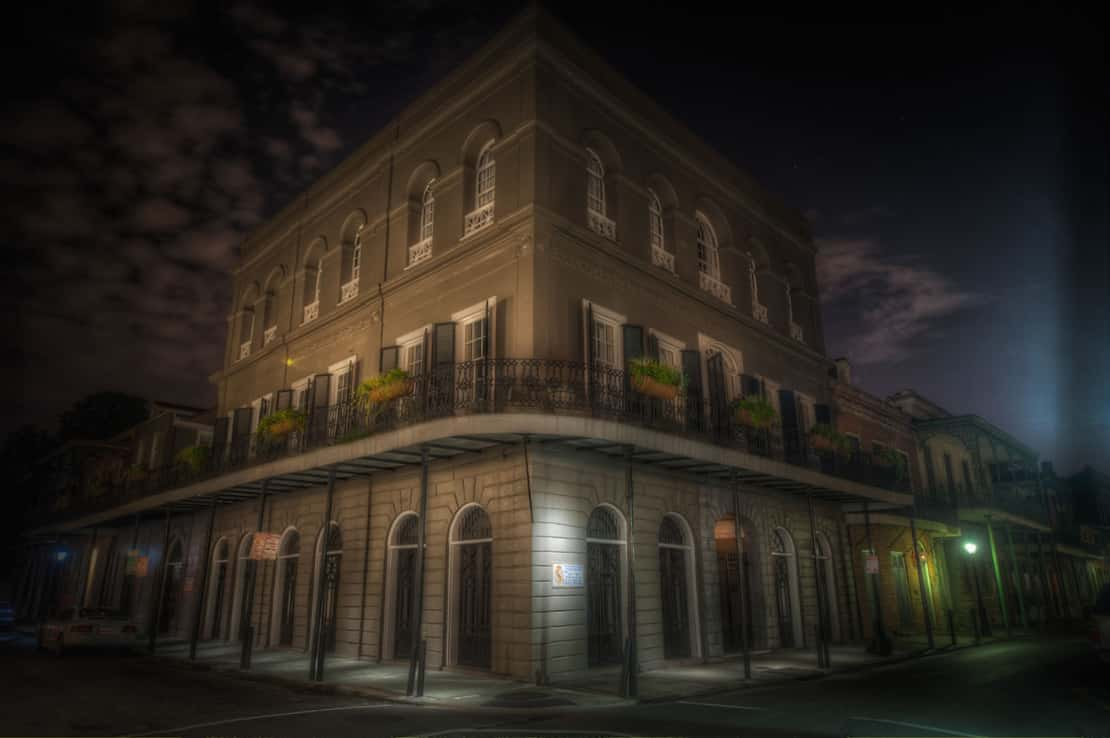
For almost 200 years, there have been reports of paranormal activity coming from this house. It shouldn't surprise many that many hauntings are attributed to the slaves that Madame LaLaurie kept on the property. There is a room in the LaLaurie Mansion where slaves were often kept - and reports of moaning coming from that room are common. Phantom footsteps echo through the house with regularity. Many people who have stood near the house have reported feeling as if they were taken over by negative energy.

Despite all of the ghost stories and paranormal happenings at the LaLaurie House, it would be folly to assume that all of them can be traced back to Madame LaLaurie and her mistreatment of slaves. In 1894, a tenant who lived at the LaLaurie Mansion (the house was converted into Apartments) was brutally murdered in his room. They found his belongings ransacked as if someone had gone through them. The police assumed that he was a victim of a robbery, even though nothing of value was found missing. An interesting account regarding this murder deals with the police interviewing neighbors about his disappearance. One of his friends claimed that he was having problems with 'Sprites' in his house. His friend wrote it off as his imagination running wild with him. But he did say something interesting. He claimed that his friend told him that there was a demon in that house who wasn't going to rest until he had met his end. Which the man did in this house. Is it possible that at least some of the ghostly phenomena can be a result of this brutal murder? It certainly is possible. However, nobody will know for sure until a real paranormal investigation team can investigate this location. Only then, by communicating with the dead who still reside here, can we hope to get to the bottom about the truth of the ghosts at the LaLaurie Mansion.
The LaLaurie Mansion was, for a very brief time, also a school for all girls during the mid-to-late nineteenth century. At first, it had been one of the few mixed schools in the city of New Orleans, but politics during the Reconstruction Era were convoluted and surely enough, soon after the school at 1140 Royal Street was converted into strictly an all-girls, African-American primary school.
Within a short amount of time, reports of physical assaults came to light. We know that young girls would approach their teachers, tears streaking down their faces, with their sleeves rolled up. The exposed flesh of their forearms were scratched and bruised.
"Who did this to you?" the teachers would demand.
The answer was always one and the same: "That woman."
But these girls were young enough to be probably not aware of Madame Delphine and the devastating tragedy some decades earlier. Moreover, it was unlikely that the teachers themselves would tell six, seven, or eight-year-olds about the starvation and immoral torture of slaves some decades before. One must wonder if the young girls were playing pranks on each other, or if their claims that some phantom woman had scarred them was true. No memoirs exist from this period, just a scattering of accounts here.
Was the spirit of Madame Delphine LaLaurie responsible for the scratches, or was it something else entirely instead?
Although not everyone believes in psychics or mediums, there was one particular instance made known to the Ghost City Tours team in which someone on one of our ghost tours happened to be a medium. Throughout the entire night, she had sensed things about various locations before the tour guide even told the story. But within the first sight of the LaLaurie Mansion, the medium sucked in a deep breath. "Such sadness," she whispered as she rocked back on her heels. Pulling out her phone, she proceeded to snap a picture of the mansion. "The bricked up window," she went on, "That's not where the little girl fell out of."
The tour guide paused, simply because she hadn't gotten to the part of the story about the little girl at all. Nevertheless, she recovered quickly and said, "No, you're right. The story goes that Leia fell into the courtyard. As for the bricked-up window, I suspect that someone did some interior decorating but wanted to maintain the symmetry on the outside of the home."
In the next few minutes, the medium experienced such a heavy emotion like the weight had settled down upon her shoulders. She sensed the spirit of a young boy who liked to play pranks on the living and the spirit of a little girl who was often nervous. Did she feel any of the helplessness or anger? the tour guide asked. "No," was the response. "Whatever happened, then with LaLaurie, does not visit the house any longer."
Is this true? Have the spirits of the slaves, who were once nearly starved to death in the house, moved on? And if that is the case, who is responsible for all of the reported hauntings at 1140 Royal Street?
One of our guides was lucky enough to experience something at the Haunted House on Royal Street. (Lucky, of course, is a term used loosely here).
On one occurrence, our guide was giving a ghost tour. They were at the LaLaurie Mansion, standing just directly across from the front door. To their right, another group was discussing the tragedies of the LaLauries some fifty feet away. But there, under the quiet moonlight, the story of 1834 was slowly unveiled. All of a sudden, our guide felt a tug on her messenger bag, draped over her shoulder. She stopped amid her story and twisted to look over her shoulder, convinced that she might find a pickpocket or someone intent on stealing her things. "Right in the middle of a tour," she exclaimed as she regaled us with the story. No one was there, however, so she turned back around and got back into character. No less than ten seconds later, she felt the tug again--harder this time, a sharp yank. Once again, she whipped around, but no one was there. This time, she told her tour what had happened and their faces, she said, were priceless. No doubt hers was, too!
Two weeks later, at the corner of Governor Nicholls and Royal Street, our guide was out on the streets again, bringing another tour around. The LaLaurie Mansion, of course, was the main hit. She had positioned her group under a set of street lamps, burnt out for weeks. She launched into the story, but the minute she said the name "Leia," the lamps flickered on! Everyone in the group paused, a few yelping in delight. The guide went on with the show--when she said the name "Leia" again, those same lamps blew out. The light was gone.
Was the ghost of Leia still there, still waiting to be spoken mentioned? Was the playing with the lights just a method in exposing her presence to the living?

Here at Ghost City Tours we have a few tours which visit the LaLaurie Mansion. While there are no tours in the city which go into this haunted home (it is private) we do visit it. You'll hear the story of Delphine LaLaurie and the ghosts in the place where the events took place!
Why is it that people can be spotted standing around snapping photos of the building on any given night? (To say nothing of the number of ghost tours that crowd the cracked sidewalks, huddled around a guide who speaks of medical experiments and torture? It might have something to do with the volume of ghost stories and accounts of the LaLaurie Mansion's hauntings. It might have something to do with the tragic events that caused the hauntings in the first place. Before we get into the ghosts and the hauntings widely reported at the LaLaurie Mansion, we should start by telling you who Madame LaLaurie was.
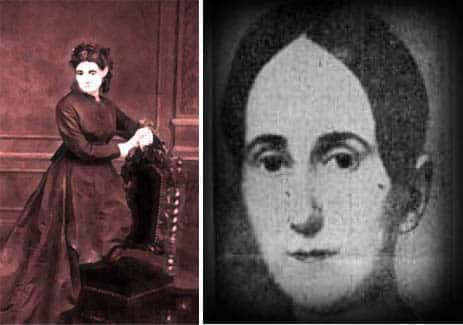
The woman who became infamous as the 'Cruel Mistress of the Haunted House' was born Marie Delphine Macarty. She was born on March 19, 1787, to Louis Chevalier Barthelemy de Macarty and Marie Jeanne Lerable.
Delphine was a member of the large, wealthy, and politically powerful Macarty clan. Her family included military officers, planters, and merchants and had arrived relatively early during the French Colonization period. Many of her relatives owned and managed extensive real estate and slaves. As her surname indicates, her family originated in Ireland. Legend has it that the family patriarch fled Ireland to France to escape the political and religious tyranny imposed by England's monarchs.
The first child of Louis Chevalier and Marie Leanne Lerable was also named Louis Barthelemy, born in 1783. Marie followed, but interestingly, her baptismal record was not entered into the sacramental register until December 26, 1793, almost five years after birth. Generally, the Catholic Church only did this when the infant in question was close to death.

On June 11, 1800, Delphine Macarty married Don Ramon de Lopez y Angullo, a Caballero de la Royal de Carlos (a high ranking Spanish officer) at the St. Louis Cathedral. Some four years later, she and Don Ramon traveled to Spain. The accounts differ on what occurred on the journey, but what we do know is that Don Ramon died in Havana en route to Madrid. Delphine was not with him when he passed. During the voyage, Delphine gave birth to a daughter, named Marie Borgia Delphine Lopez y Angulla de la Candelaria, nicknamed "Borquita." Their stay in Spain was short-lived following her husband's mysterious death, and both mother and young daughter soon returned to New Orleans.
Delphine's second marriage was to Jean Blanque, a man who carried many titles including banker, merchant, lawyer, and legislator. They wed in June of 1808. After their union, Jean Blanque bought the property with a house at 409 Royal Street. During her marriage to Blanque, Delphine gave birth to four more children: Marie Louise Pauline, Louise Marie Laure, Marie Louise Jeanne, and Jeanne Pierre Paulin Blanque. Unfortunately, tragedy struck again, and Blanque died in 1816.
But it was Delphine's third and final marriage in 1825 which caused the most controversy. Leonard Louis Nicolas LaLaurie was a transplant from France. He was a physician, though today, he might have been considered more of a chiropractor. Their meeting was not pure luck. One of Delphine's daughters from her second marriage had some deformities along her spine and was subsequently ill. Hired to cure the girl, Louis LaLaurie used all sorts of medical equipment that looked quite torturous. Delphine's daughter did not get better, but Delphine was enamored with the physician even though she was nearly twenty years older. Letters show that LaLaurie departed New Orleans for France and that it was his brother who persuaded his return.
After all, Louis had impregnated Delphine. Nothing else could be done but marry her.
In 1831, Delphine purchased the property at 1140 Royal Street, where she would live with her LaLaurie and two of her children. But the marriage was not a happy one. Neighbors overheard the couple arguing profusely, and it was almost unsurprising to them when Louis LaLaurie packed his bags and moved out sometime in the early months of 1834.
Losing her husband reportedly drove Delphine mad. Rumors spread that she was harming her slaves, and an incident in 1833 when a young slave within the household, Leia, fell to her death in the courtyard turned all eyes on Marie Delphine Macarty LaLaurie. The council held an investigation, an all of her slaves were set free. One by one, Delphine purchased them all back. The events within 1140 Royal Streets quieted until that fateful night in 1834.
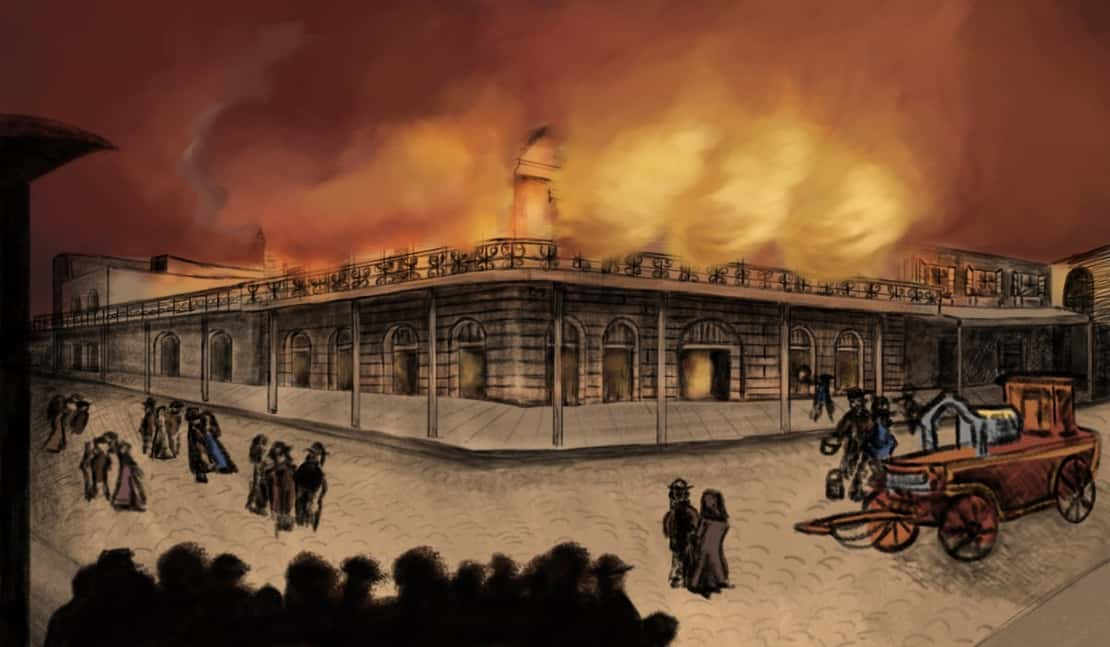
On the morning of April 10, 1834, a fire broke out at the luxurious house owned by Delphine LaLaurie. The fire destroyed part of the house and brought to light seven slaves who were starved, tortured, and chained in the upper part of the building.
The nearly helpless were carried to the Cabildo where they received medical treatment, food, and drink. Nearly two thousand townspeople came to view the victims. Appalled by the wretched sight before them, the people began gathering at the LaLaurie Mansion in the expectation that the Sheriff would arrest Delphine. However, the Sheriff never arrived. As the day went on, it became apparent that any action would not happen. The crowd slowly transformed into a mob with only one thought: vengeance.
When Madame LaLaurie managed to escape the fray, the enraged crowd attacked the now empty residence. They stripped the interior of its valuables and continued their assault by trying to dismantle the whole house by damaging the walls and the roof. By the next morning, they had nearly demolished the entire house. Details of the fire and the aftermath, as reported by eyewitnesses, emerged in the local newspapers during the following week. The account was soon picked up by national publications. Madame LaLaurie was reviled as a "monster," a "demon in the shape of a woman," and "fury itself escaped from hell."
The fire was ignited in the kitchen of the grand mansion. Allegedly the fire started on purpose by a slave woman chained to a stove as punishment; the fire seemed to be an attempt at trying to call attention to the deplorable conditions that she and her fellow slaves endured.
Many of the stories told about the LaLaurie Mansion involve slaves being found under extreme conditions after the fire was extinguished. One version begins with the conditions that the slaves, found when authorities arrived. The story says that one of the slaves had their bones broken numerous times, and set in unnatural positions, so that when she moved, her limbs remained crooked and bent, her gait reminiscent of a crab's. Another slave was said to have had a hole drilled into his head, with a wooden spoon sticking out--An obvious attempt to stir the brains of this poor soul. Allegedly, a different person had their skin peeled back to expose the tissue and muscle to the naked eye. The story also claims that another slave had his intestines removed from his body and wrapped around his naked waist. Others, covered with honey and black ants, lived in torture. As the legend goes, the lucky ones were found dead, their torture finally at an end.
Many of these stories and exaggerations can be traced back to books written by commentaries well after the fire broke out. The more gruesome stories are renditions told in Jeanne Delavigne's The Haunted House of the Rue Royal in 1946. Delavigne claimed to have come upon her information from "old newspaper accounts, interviews, and neighborhood hearsay." Delavigne also declared that when the house was sold, workers went about rebuilding the house. They uncovered numerous human skeletons beneath the house in "all sorts of positions, helter-skelter, barely covered with soil, shreds of fabric still adhering to their bones...some of the skulls had holes in them." The authorities concluded that the bodies were those of former LaLaurie slaves, their bodies buried to hide the fact that they were killed inside of the LaLaurie Mansion. Are these bodies the former vessels for the ghosts which haunt the LaLaurie Mansion today?
But are these gruesome tales simply a product of the twentieth century? In truth, they extend back to the same year as the devastating fire. While other newspapers in the area said that slaves were kept in poor conditions, the New Orleans Bee newspaper took it many steps further by saying that the slaves were tortured, some of them appear to be part of medical experiments. There are a few things to consider about the Bee's coverage of the LaLaurie Mansion and its events. First, they were the only newspaper to include stories about tortured slaves being mutilated. Second, their reputation in the 1830s could be likened to the reputation of the National Enquirer today, where Bigfoot and aliens are the main spread. Historians argue that the Bee's article about the fire, the slaves and the LaLauries was based on information they obtained by hearsay.
Their informant was Monseuir Montreuil, the spurned neighbor of Madame LaLaurie. Montreuil lived next door to the LaLauries at the time the fire broke out and years before that, as well. Montreuil suffered an unfortunate bout of unrequited love for Delphine LaLaurie. It was documented, by reporters interviewing people after the fire, that Montreuil had made advances toward Delphine for years. (The problem with unrequited love is that it is generally not, well, requited). Montreuil comforted himself, no doubt, by speaking of Delphine in a derogatory manner.
In the Sunday magazine section of the New Orleans Times-Picayune on February 4, 1934, much of this information was brought to light by Meigs Frost. He wrote that the whole story--the slaves being experimented on and the mutilation--was the result of a smear campaign orchestrated by Monsieur Montreuil. Frost wrote, "Her indulgence of her slaves was well told by friends. She would hand half-empty wine glasses at dinner to the slave who waited behind her chair, insisting that they drink it. Her coachman was fed to sleekness." Frost also provided information on the slave girl, Leia, who was supposedly chased by Delphine through the house with a whip. He stated, based on his information and sources, that "the little negress who 'leaped from the roof' fleeing Delphine's whip" was actually "sliding down a curving banister, playing, and fell, being killed by the marble hallway floor."
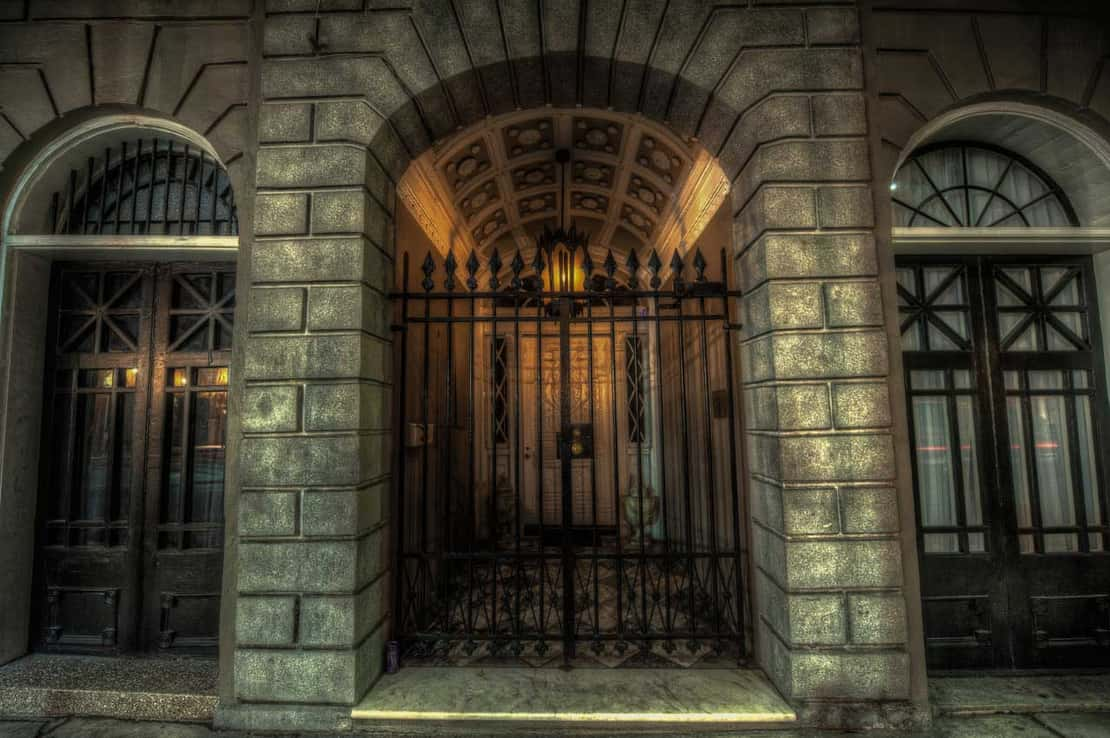
So, what is the truth about Madame LaLaurie and the house that sits here today? To start, we can certainly throw out any accounts of slaves used for medical experiments. Almost all of those stories didn't even show up until the 1940s. If they were true, surely they would have been mentioned in previous newspapers or other various accounts. It isn't outside the possibility that the townspeople found slaves in poor conditions inside the LaLaurie House. A Lawyer, sent by the city, visited Madame LaLaurie. He warned her about the laws regarding the treatment of slaves. So, it stands to reason that, in private, anyways, she wasn't the nicest person to the slaves she owned. Some even wonder if Delphine's supposed hatred toward slaves stemmed from the fact that all of her male relatives, including her father, had mistresses who were free women of color. It's difficult to say. However, the exaggerated stories about slaves being found missing skin and heads drilled with holes are nonsense.
Our ghost tour guides are always asked, whatever happened to Madame LaLaurie? After she left New Orleans, we know she went back to France. Her ship docked in Mobile before continuing the journey to Paris. Her death is shrouded in mystery just as her life was. One popular account details her death while hunting boar. That is very unlikely. (Does the arrogant Delphine seem the sort to hunt game?) Other stories report her returning to New Orleans, later in life, under an assumed name. While historians widely discount this story, there is a reason to believe she could have. According to some, the Blanque Tomb in St. Louis Cemetery #1 holds her body. Most likely, she died in France. There are records kept in France that show she died on December 7th, 1849. More significantly, letters exchanged with her children explain how Delphine desperately wanted to return to New Orleans, but that her children forbid it. "Do you not remember what happened there?" her son asked in one massive. Her children, save the one she had with Louis LaLaurie, all lived the rest of their days with their mother in Paris. (In the same house).
Whatever the truth, in the late 1930s, Eugene Backes, who served as sexton to St. Louis Cemetery #1 until 1924, discovered an old cracked, copper plate in Alley 4 of the cemetery. The inscription on the plate read: "Madame LaLaurie, née Marie Delphine Macarty, décédée à Paris, le 7 Décembre, 1842, à l'âge de 6--.
Despite the nearly two centuries which have passed since the fire in 1834, the events of that year are still told today as though they occurred only just yesterday. Facts are spun into tales of brutality and torture until the truth is a muddled pool that can never be sorted. The more research one does, the more confusing the whole story becomes. The house becomes an entity all unto itself.
When actor Nicolas Cage purchased the building in 2009, he lost it soon after because of bankruptcy. His career tanked not long after that, and New Orleanians whispered that it must be the curse of the LaLaurie Mansion, which caused the downward spiral.
Notarial records show us that since Delphine LaLaurie, no one has lived at 1140 Royal Street for more than five years. And as the current owner, an oil tycoon from Texas, of the mansion has only lived there since about 2012/2013; it is quite possible that his time at the Haunted House on Royal is soon coming to an end.
Is the curse real at the LaLaurie Mansion? On our New Orleans Ghost tours you will hear the entire story of Madame LaLaurie and the ghosts and hauntings that happen with regularity at the LaLaurie Mansion. We promise the story you'll hear on the ghost tour is one that you won't forget anytime soon.
Many people ask us if you can tour the LaLaurie Mansion. While you cannot go inside, if you join us on a Ghost Tour, you'll visit this haunted house.
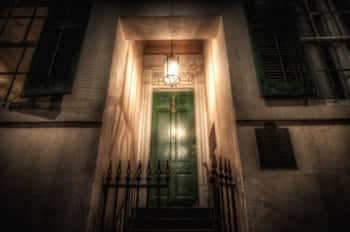
Was this the site of a grizzly mass murder?

New Orleans' most haunted Cemetery
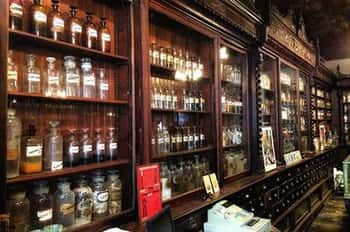
Who haunts this museum, and why?